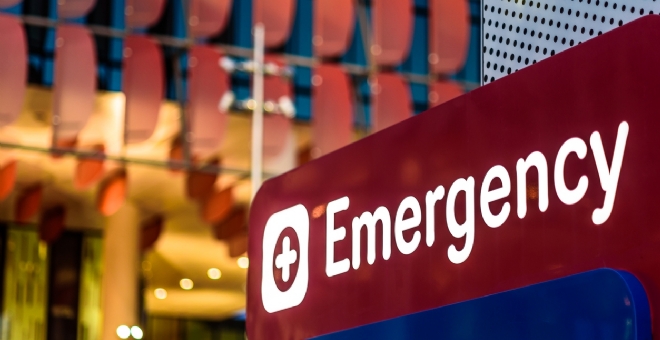CMS Issues EMTALA Guidance for Hospitals Facing Influx of Patients with Suspected or Confirmed Novel Coronavirus (COVID-19) and EMTALA 1135 Waiver

CMS issued guidance for hospitals (including Critical Access Hospitals or CAHs) addressing EMTALA obligations in the context of COVID-19.[1] This guidance underscores that hospitals may not refuse to allow individuals with suspected cases of COVID-19 into their emergency department (“ED”) or to perform a medical screening examination on an individual who comes to their ED with potential or suspected COVID-19. CMS indicates that it would likely find any such refusal to violate EMTALA, regardless of presenting signs, symptoms, and possible diagnoses. This EMTALA guidance can be found on our COVID-19 resource page, along with our COVID-19-related Health Law Advisories and other Federal and State resources.
In particular, the new EMTALA guidance emphasizes that, regardless of whether an individual has, or is suspected of having, COVID-19, hospitals with dedicated EDs are required to:
- Conduct appropriate medical screening examinations of all individuals who come to the ED to determine if they have an emergency medical condition. Moreover, the guidance notes that all qualified medical personnel performing screening examinations should be knowledgeable of the criteria for COVID-19 screening;
- Provide stabilizing treatment for individuals with emergency medical conditions within the hospitals’ capability and capacity; and,
- Effectuate an appropriate transfer to a receiving hospital with the capability and capacity to stabilize a patient’s emergency medical condition if the transferring hospital is unable to stabilize.
CMS Expectations for Patients with Potential COVID-19 Infection
When the medical screening examination (including, in some cases, triage) suggests possible COVID-19 infection, the hospital is expected to isolate the patient immediately. This expectation is consistent with Medicare Conditions of Participation that require hospitals to adhere to accepted standards of infection control practice to prevent the spread of infectious disease and illness. Thus, CMS expects all hospitals to, within their capability, provide medical screening examinations and initiate stabilizing treatment, while also maintaining the isolation requirements for COVID-19 and coordinating with their State or local public health officials, who will in turn arrange coordination, as necessary, with the Centers for Disease Control (“CDC”).[2]
In addition to the EMTALA obligations of hospitals with dedicated EDs, CMS also reminds recipient hospitals (that is, hospitals with capacity and specialized capabilities needed to stabilize a particular patient’s emergency medical condition), that they are required under EMTALA to accept appropriate transfers. The recipient hospital requirements apply with equal force to hospitals without dedicated EDs.
Use of Alternative Screening Sites
CMS also provides guidance on EMTALA compliance and the use of alternative screening locations to accommodate surges in patients coming to the ED. As a reminder, however, CMS guidance does not override state licensing laws. Hospitals must continue to comply with such laws, as well as any other applicable laws and regulations. For California, All Facilities Letter 20-18, which addresses issues relating to hospital surge capacity, including the requirement that hospitals submit Form 5000-A to the California Department of Public Health (“CDPH”) to request flexibility for increased patient accommodations.
Hospital Campus[3] Alternative Screening Sites: CMS’s EMTALA guidance provides that the medical screening examination can take place in an alternative site on the hospital campus. If a hospital chooses to utilize such alternative sites, in additional to complying with state licensing laws, CMS emphasizes that it would be a violation of EMTALA to use signage that presented a barrier to individuals who are suspected of having COVID-19 from coming to the ED. However, hospitals can use signage to direct individuals to locations on hospital property for their screening examination. Specifically, CMS notes that:
Individuals may be redirected to these sites after being logged in. The redirection and logging can even take place outside the entrance to the ED…. The person doing the directing should be qualified (e.g., an RN) to recognize individuals who are obviously in need of immediate treatment in the ED.
Additionally, consistent with EMTALA, the hospital must still provide stabilizing treatment or effectuate an appropriate transfer of any individual that is determined to have an emergency medical condition.
Similar to guidance on alternative sites on the hospital’s campus, CMS also provides guidance regarding whether hospitals can ask patients to wait in their car or outside of the hospital, as suggested by the CDC. While recognizing that the medical screening examination must be timely, taking into account the clinical condition of the patient, CMS notes that if an individual, after an appropriate screening examination, meets the CDC criteria for potential COVID-19 but does not have an emergency medical condition, then the hospitals can request that the patient wait in his or her car or outside. However, CMS cautions that such patients should be monitored to determine whether there is any deterioration of their condition and that a failure to do so could potentially result in an EMTALA violation for failure to conduct an appropriate screening examination and potentially a violation of the Medicare Condition of Participation related to emergency services.
Off-Campus, Hospital-Controlled[4] Sites: Off-campus sites may be used for screening potential COVID-19 cases, and EMTALA would not apply unless those sites were dedicated EDs of the hospital. However, if a particular individual requires emergency care, the hospital is required to arrange a referral or transfer under the Medicare Conditions of Participation. Finally, a hospital may not redirect or transfer patients who have already come to the ED to an off-site location to receive a medical screening examination.
Community Screening Clinics, not under hospital control. Communities may also set up screening clinics at sites not under the control of a hospital, and EMTALA would not apply at those sites. Public health officials and hospitals can encourage the public to utilize these sites for screening instead of coming to the ED. But, again, a hospital may not redirect or transfer patients who have already come to the ED to a community screening clinic to receive a medical screening examination. CMS further suggests that the community, local hospitals, and local emergency medical services have a plan in place for referral and/or transport of any individuals that need emergency care after presenting to a community screening clinic.
Review of Alleged EMTALA Violations
In reviewing alleged violations of EMTALA, CMS notes that it would evaluate the capability and capacity of both the referring and recipient hospital and would consider a number of factors when making a determination as to whether any EMTALA violation occurred, including:
- The screening and treatment activities performed by the referring hospital for the individual;
- Clinical considerations specific to the individual case(s), and the patient’s clinical condition at the time of presentation to the referring hospital and at the time of the transfer request;
- Whether the request for transfer was consistent with any nationally recognized guidelines in effect at the time of the transfer request for COVID-19 screening, assessment, including guidance about transfer for further assessment or treatment of suspected or confirmed COVID-19; and,
- The CDC recommendations at time of event.
With respect to the last consideration, at the time CMS issued the guidance, CDC’s recommendations focused on factors “such as the individual’s recent travel or exposure history and presenting signs and symptoms in differentiating the types of capabilities hospitals should have to screen and treat that individual.” Given these factors, CMS notes that the presence or absence of negative/positive pressure rooms would not be the sole determining factor in whether a hospital had the specialized capability to stabilize an individual’s emergency medical condition involving COVID-19.
1135 Waiver Issued
The CMS guidance also touches on 1135 waivers, under which the Secretary is authorized to take certain actions in addition to her regular authorities, including temporarily waiving or modifying certain Medicare requirements such as EMTALA. For an 1135 waiver to be issued:
- The President has declared an emergency or disaster under the Stafford Act or the National Emergencies Act;
- The Secretary of HHS has declared a Public Health Emergency; and
- The Secretary invokes her/his waiver authority (which may be retroactive), including notifying Congress at least 48 hours in advance.
On March 15, Secretary Azar issued an EMTALA 1135 waiver, permitting affected hospitals to:
- Direct or relocate individuals who come to the ED to another location, in accordance with a State emergency preparedness plan, for the medical screening examination; or
- Effect transfer of an individual with an unstable emergency medical condition, so long as the transfer is necessitated by the circumstances of the declared emergency.
While the waiver applies nationwide, it will only apply to a hospital if: (1) the hospital has activated its disaster protocol and (2) the state has activated an emergency preparedness plan or pandemic preparedness plan, and the redirection of individuals to other hospitals for medical screening is consistent with the state plan. It is also important to note that hospitals must continue to meet all EMTALA requirements except for the obligations excused or suspended under the terms of the waiver. The waiver is also available only to providers that, in good faith, are unable to comply with such requirements as a result of COVID-19, and “to the extent necessary, as determined by [CMS], to ensure that sufficient health care items and services are available to meet the needs of individuals enrolled in the Medicare, Medicaid and CHIP programs.” Seeking additional guidance from the CMS regional office may be warranted to determine the extent to which this waiver applies.
Finally, while the waiver technically took effect on March 15 as of 6:00 p.m., it applies retroactively to March 1, 2020, for a period of 60 days (subject to extension by the Secretary) or for the duration of the COVID-19 national emergency (whichever is earlier).
For further information, please contact Alicia Macklin or Nina Adatia Marsden in Los Angeles, Katrina Pagonis in San Francisco, Amy Joseph in Boston or your regular Hooper, Lundy & Bookman contact.
[1] This alert provides a summary of CMS’ 17-page guidance. Hospital staff are advised to read the guidance in its entirety as it provides detailed information regarding EMTALA compliance during the COVID-19 pandemic.
[2] CDC’s screening guidance can be accessed at: https://www.cdc.gov/coronavirus/2019-ncov/hcp/clinical-criteria.html.
[3] For EMTALA purposes, the “hospital property” means the entire main hospital campus, including the parking lot, sidewalk and driveway or hospital departments, including any building owned by the hospital that are within 250 yards of the hospital.
[4] While the CMS guidance is not clear in defining what “hospital-controlled sites” are, this likely refers to provider-based hospital departments billing under the hospital’s provider number. EMTALA will not apply to other off-campus sites that are not provider-based.
